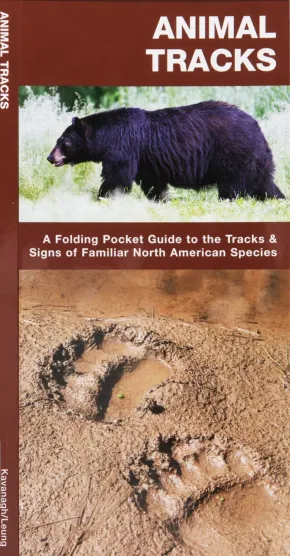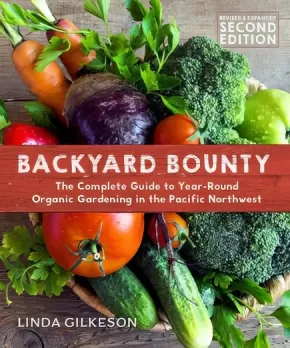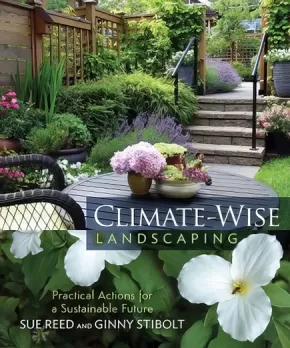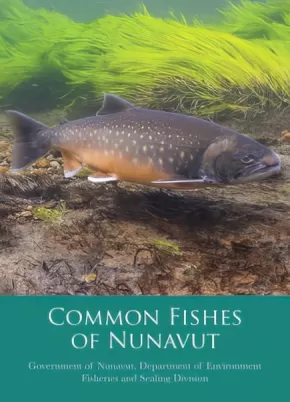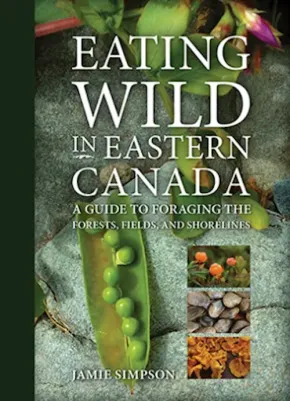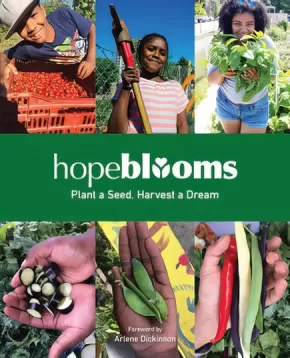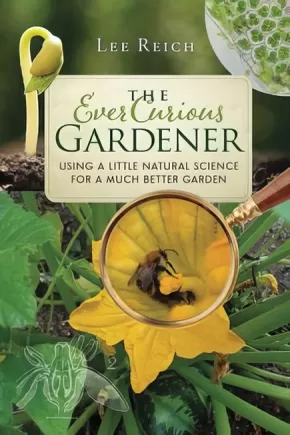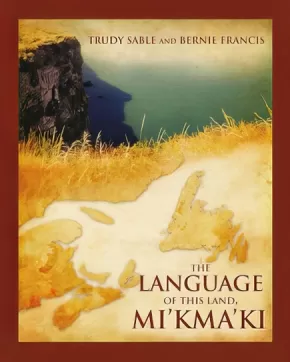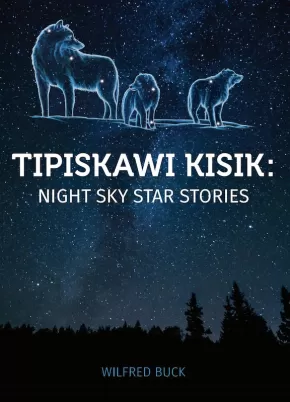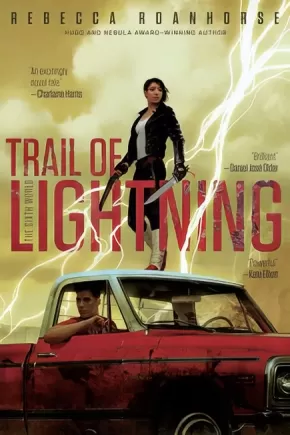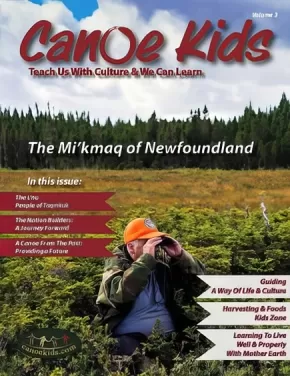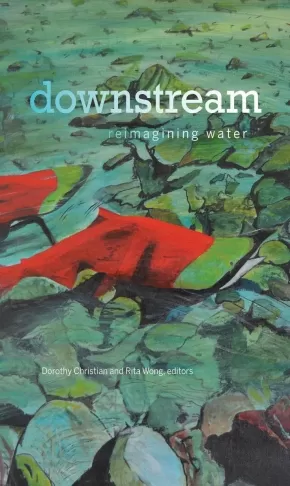
Nature
106
-
120
of
186 Results;
Sort By
Go To
of 13
Among Trees: A Guided Journal for Forest Bathing
$23.95
Format:
Hardcover
ISBN / Barcode: 9781604698893
Synopsis:
Synopsis:
Fully illustrated with gorgeous color photographs of the forest and its inhabitants, Among Trees is a lush guided journal that helps you record and reflect on your therapeutic trips into the woods. Use the blank pages to capture the date, season, weather, and location of specific outings. Creative prompts throughout will help you deepen your experience. Inspirational quotes and sidebars on the benefits of forest bathing pepper the pages for added motivation and depth.
Reviews
"[This journal] can help you add this delightful practice to your life and help you experience greater health on all levels.” —New Spirit Journal
Additional Information
224 Pages | 6" x 8.25"
Animal Tracks: A Folding Pocket Guide to the Tracks & Signs of Familiar North American Species
$11.95
Format:
Pamphlet
Reading Level: N/A
ISBN / Barcode: 9781583550724
Synopsis:
Synopsis:
Animal Tracks provides a simplified field reference to familiar tracks and signs of over 65 North American mammals and birds. Laminated for durability. Features a ruler for measuring animal tracks. It is a great source of portable information and ideal for field use by novices and experts alike.
Additional Information
12 pages | 3.75" x 8.25" | Full Colour
Backyard Bounty: The Complete Guide to Year-Round Organic Gardening in the Pacific Northwest - Revised & Expanded 2nd Edition
$34.99
Format:
Paperback
ISBN / Barcode: 9780865718418
Synopsis:
Synopsis:
Grow more food, with less work, in any yard – now completely revised and expanded!
Are you itching to start your own garden or grow more in the one you have, but feel that gardening is too challenging or time-consuming for your busy schedule?
Now completely updated and expanded, Backyard Bounty will demystify gardening, bringing it back to the down-to-earth, environmentally practical activity that anyone can enjoy.
Author and master gardener Linda Gilkeson covers everything you'll need to grow a successful garden, including:
- Planning your garden and preparing the soil
- Organic fertilizers and simplified composting
- Planting for winter harvests and intensive planting schedules
- Comprehensive information on pests, diseases, and working with an unstable climate
- Greenhouses, tunnels and containers
- Organic pest management.
Packed with a wealth of information specific to the Pacific Northwest, this complete guide emphasizes low-maintenance methods, covers problems related to common pests and climate concerns, includes a monthly garden schedule for year-round planting and harvesting, and features plant profiles for everything from apples to zucchini.
Perfect for novice and experienced gardeners alike, Backyard Bounty shows how even the smallest garden can produce a surprising amount of food twelve months of the year.
Reviews
"Backyard Bounty is very likely the best book ever written on growing food in the Pacific Northwest, and it sets a whole new standard for garden writing. By acknowledging the impacts of climate change on our gardens, Gilkeson further elevates the literature. This is the first “real time” gardening book. It is fresh and timely, and every page courses with practical advice and revelations. All growers should own this amazing and insightful book, and we should refer back to it often." —Mark Macdonald, West Coast Seeds
"Ideal for both new and seasoned gardeners, this new edition adds more listings to the detailed fruit and vegetable profiles, updates variety choices, and supplies practical information on dealing with common pests and diseases, including new ones to our region. Tips on adapting gardening practices to changing weather patterns are eminently helpful, as is a focus on the soil as a life force that fosters health in plants." —Helen Chesnut, Garden columnist, Times Colonist
"Whether you have a small or large lot, little or plenty of time, this book shows you how to grow your own toxic-free fruit and vegetables the whole year-round. From preparing the ground to harvesting and storing the ripened produce, all is clearly explained. An invaluable book for novices and experienced gardeners". —Barry Roberts, Past-President, Master Gardeners Association of BC
Additional Information
384 pages | 7.50" x 9.00" | 120 b&w illustrations and photographs
Climate-Wise Landscaping: Practical Actions for a Sustainable Future
$29.99
Format:
Paperback
ISBN / Barcode: 9780865718883
Synopsis:
Synopsis:
What can we do, right now, in our own landscapes, to help solve climate change?
Predictions about future effects of climate change range from mild to dire - but we're already seeing warmer winters, hotter summers, and more extreme storms. Proposed solutions often seem expensive and complex, and can leave us as individuals at a loss, wondering what, if anything, can be done.
Sue Reed and Ginny Stibolt offer a rallying cry in response - instead of wringing our hands, let's roll up our sleeves. Based on decades of experience, this book is packed with simple, practical steps anyone can take to beautify any landscape or garden, while helping protect the planet and the species that call it home. Topics include:
- Working actively to shrink our carbon footprint through mindful landscaping and gardening
- Creating cleaner air and water
- Increasing physical comfort during hotter seasons
- Supporting birds, butterflies, pollinators, and other wildlife.
This book is the ideal tool for homeowners, gardeners, and landscape professionals who want to be part of the solution to climate change.
Reviews
"Sue Reed and Ginny Stibolt bring complementary backgrounds to bear on the subject of how we can adapt our landscapes to a changing climate. Starting from the premise that the impacts of climate change will only become more severe in the future, the authors have created a comprehensive book that outlines dozens of actions that people can take to adjust to evolving climate regimes. In the process, they articulate a new gardening aesthetic for people who work with small garden plots, farms and woodlots. The result is a positive and hopeful story of how people can use their imagination and ingenuity to help craft more resilient landscapes." -Dr. Peter Robinson, former CEO, David Suzuki Foundation
"Climate-Wise Landscaping is a comprehensive, yet easy to read, source of information on climate-change adaptation and mitigation actions for the homeowner, gardener, and landscape professional. Beautiful photos and pleasing graphics illustrate key ideas and actions while informative sidebars and inspiring quotes from climate and landscape experts provide clarity of complex systems and motivation to adapt to a changing future. The text provides an engaging blend of broad ideas along with specific actions we can take to adapt to climate-change at the level of our home landscapes, whether a small garden plot within an urban area or twenty acres in the countryside." -Julie Richburg, Ph.D., Ecologist
"Given the lateness of the hour, a book on climate-wise landscaping could not be more timely or more necessary. We are moving into a new and critical era, and this book takes landscape professionals and home gardeners where they need to go. The facts, well-presented and practical, will be an eye-opener for many people, and empower us as horticulturists of all stripes to do what is both helpful and imperative. Landscaping has always been more than just exterior decorating, and now we have one more tool in our kit to make the landscape ecosystem a part of the solution. Thank you, Sue and Ginny, for hitting a home run." -Owen Dell RLA, ASLA, landscape architect, educator, author, Owen Dell & Associates
"Gardening is not always as green and good for the planet as we might think. Sue Reed and Ginny Stibolt open our eyes to surprisingly common, unsustainable landscaping practices and inspire us to rethink how we create and care for land. This fantastic resource is filled with climate-wise solutions for anyone who owns or manages a piece of ground – even if it’s just a few containers on a tiny rooftop garden. You will quickly learn about exiting ways to offset some of the effects we people have on the planet. The book is easy to navigate and it passionately links better gardening practices with better life quality and a brighter future for our planet." -Claudia West ASLA, Principal, PHYTO STUDIO LLC
Additional Information
320 pages | 7.50" x 9.00" | full colour throughout
Common Fishes of Nunavut
$26.95
Format:
Paperback
Text Content Territories:
Indigenous Canadian; Inuit;
ISBN / Barcode: 9781772272314
Synopsis:
Synopsis:
Discover the rich and varied world of Nunavut's many fishes in this comprehensive guide.
Covering a broad range of information about Northern fish species, each section includes identification and appearance, habitat and range, relationship to humans, life cycle and reproduction, feeding habits, and other fascinating facts. This book also includes photorealistic illustrations of each species and traditional knowledge about fish collected through interviews with Inuit elders.
Common Fishes of Nunavut will introduce readers to the stunning range of fishes that live in Arctic rivers, lakes, and oceans.
Educator Information
For young adults & adults.
Additional Information
368 pages | 6.50" x 9.00"
Authenticity Note: Because of the contributions from Inuit elders, this book has received the Authentic Indigenous Text label. It is up to readers to determine if this will work as an authentic resource for their purposes.
Damming the Peace: The Hidden Costs of the Site C Dam
$22.95
Editors:
Format:
Paperback
Text Content Territories:
Indigenous Canadian; First Nations;
ISBN / Barcode: 9781459413160
Synopsis:
Synopsis:
Since the 1970s, the Site C Dam in northeastern British Columbia's Peace River Valley has been touted by B.C. Hydro and successive governments as necessary to meet the province's increasing energy needs. With its enormous $10 billion price tag, the dam would be the largest public works project in BC history. It would be the third dam on the Peace River, and destroy traditional unceded territory belonging to Treaty 8 First Nations.
Following the last provincial election, the newly appointed NDP government called for a review of the project, but work on the dam continues. This comes after protests by aboriginal groups and landowners, several lawsuits against the government, and federal government intervention to let the dam go ahead. More recently, there has been a call from a United Nations panel to review how the dam will affect Indigenous land.
This book presents the independent voices of citizen experts describing every important impact of the dam, including:
- Sustainable energy expert Guy Dauncey on future energy demand, and whether there is likely to be a need for the dam's electricity
- An interview with aboriginal activist Helen Knott on the dam's assault on traditional lands and culture, in particular Indigenous women
- Agrologist Wendy Holm on the farm land impact — prime horticulture land important to food security and nutrition
- Family physician Warren Bell on the effect that loss of traditional way of life and connection to the land has had on the health of aboriginal people
- Wildlife biologist Brian Churchill with forty years' experience of studying its land and wildlife
- Former environmental minister Joan Sawicki on government cover-ups and smoking guns
- Energy industry watchdog Andrew Nikiforuk on the links between dams, fracking and earthquakes
- Award-winning broadcaster Rafe Mair on how party politics corrupts political leadership, and the role of activism and civil disobedience in shaping government decision-making
- David Schindler, one of the world's foremost water ecologists, explains the role dams like Site C will play in Canada's climate change strategy
- Joyce Nelson connects the dots between the Site C dam and continental water sharing plans
Reviews
"Wendy Holm brings another perspective to the case against Site C, that of the production of crops." — Nelson Star, January 2018
"A massive, $10 billion hydroelectric dam project on British Columbia’s Peace River could threaten the First Nations peoples who live nearby. This volume dives deep into the potential impacts and decades of governmental cover-ups related to this long-planned project."— John R. Platt, The Revelator, April 2018
"This book provides an organized and rigorous “how to” guide on the intellectual and fact-based opposition to Site C, and in doing this becomes a great model for a book on any long-term protest. Its ambition is to inform on the subject from every possible angle, keeping the Peace River, the region and its people in mind, rather than the expediency of the business and government angle, which is usually given at least equal weight by the mainstream media." — Cathryn Atkinson, Rabble, June 2018
"There is an "elephant in the room" — not the huge white elephant that you see at No-Site C rallies. This elephant is dark and invisible. The government does not talk about it ... No. This elephant is rather more sinister. Wendy Holm confronts it and exposes it. It's about exporting water."— John Gellard, The Ormsby Review, August 2018
"Damming the Peace is an accessible, thoughtful and informative collection of essays that reveal the grave environmental, human and economic costs if the Site C dam is built."— Tim Pelzer, People's Voice, October 2018
Educator Information
Includes Indigenous content/perspectives and an Interview with Indigenous activist Helen Knott.
Additional Information
272 pages | 6.00" x 9.00"
Eating Wild in Eastern Canada: A Guide to Foraging the Forests, Fields, and Shorelines
$22.95
Format:
Paperback
Reading Level: N/A
ISBN / Barcode: 9781771085984
Synopsis:
Synopsis:
From fiddleheads to spruce tips, wild food can be adventurous and fun--with the right guide. In Eating Wild in Eastern Canada, award-winning author and conservationist Jamie Simpson shows readers what to look for in the wilds and how and when to collect it.
Grouping foods by their most likely foraging locations—forests, fields, and shorelines—and with 50 full-colour photographs, identification is made accessible for the amateur hiker, wilderness enthusiast, and foodie alike. Includes historical notes and recipes, cautionary notes on foraged foods' potential dangers, and interviews with wild-edible gatherers and chefs. While gathering wild edibles may be instinctive to some, there is an art to digging for soft-shelled clams and picking highbush cranberries, and Simpson joyfully explores it in this one-of-a-kind narrative guidebook.
Additional Information
152 pages | 6.50" x 9.00" | Paperback
Freshwater Fishes: A Folding Pocket Guide to Familiar North American Species
$9.95
Format:
Pamphlet
Reading Level: N/A
ISBN / Barcode: 9781583551837
Synopsis:
Synopsis:
From sunfish to catfish, there are almost 800 species of freshwater fish in North America. Freshwater Fishes is the ideal pocket-sized, folding guide for the avid angler. This beautifully illustrated guide highlights over 120 familiar species. Laminated and durability, this handy guide will fit into your pocket as you cast your fishing rod into the pristine water.
Additional Information
12 pages | 3.75" x 8.25" | Foldable guide
Hope Blooms: Plant a Seed, Harvest a Dream (3 in Stock)
$24.95
Format:
Paperback
ISBN / Barcode: 9781771086950
Synopsis:
Synopsis:
There is an old saying that it takes a village to raise a child, but Jessie Jollymore has experienced through the youth of Hope Blooms, an inner-city initiative she founded that engages at-risk youth, that sometimes it takes the children to raise the village. A dietitian who worked in inner city health for 15 years, Jollymore witnessed the challenges people face every day with food security, isolation, discrimination, and poverty. An idea bloomed of creating sustainable, youth-driven micro-economies: growing local food systems, growing social enterprises, and mentoring youth to become leaders of change. This led to over 50 youth ages 6 to 18 leading the way in growing over 3,000 pounds of organic produce yearly for their community, building innovative outdoor classrooms, and building a successful Fresh Herb Dressing social enterprise, with 100% of proceeds going toward growing food, and scholarships for youth.
In this inspiring, vibrant book, the youth behind Hope Blooms tell the story of the social enterprise they built from the soil up, the struggles of "creating something from nothing," successfully navigating the world of business, and ultimately building resilience and leaving behind a legacy. Includes youth's words of wisdom, stories, and poetry, and over 75 colour photos.
Additional Information
180 pages | 7.50" x 9.25"
The Ever Curious Gardener: Using a Little Natural Science for a Much Better Garden
$24.99
Format:
Paperback
ISBN / Barcode: 9780865718821
Synopsis:
Synopsis:
Unleash your inner geek and let this irreverent romp through the wonders of the garden yield practical results.
Curious why caressing your cucumber plants will help them bear more fruit? Or why you should grow oranges from seed even if the fruit is inedible? Or why trees need to sleep and how to help them?
Join acclaimed gardener, scientist, and author Lee Reich on a journey through the delights of your garden in this laugh-out-loud treatise on the scientific wonders of plants and soil. Offering eye-opening insight and practical guidance, coverage includes:
The Ever Curious Gardener is an irreverent romp through the natural science of plants and soil, ideal for newer gardeners moving beyond back-of-the-seed-pack planting to experienced gardeners whose curiosity at the wonders of cultivation grows deeper and stronger with each season.
Curious why caressing your cucumber plants will help them bear more fruit? Or why you should grow oranges from seed even if the fruit is inedible? Or why trees need to sleep and how to help them?
Join acclaimed gardener, scientist, and author Lee Reich on a journey through the delights of your garden in this laugh-out-loud treatise on the scientific wonders of plants and soil. Offering eye-opening insight and practical guidance, coverage includes:
- How to maximize both flavor and nutrition in your garden bounty
- Helping plants thrive during drought
- Outwitting weeds by understanding their nature
- Making the best use of compost
- Tips on pruning and orchard care
- Why the dead language of Latin can make you a better gardener.
The Ever Curious Gardener is an irreverent romp through the natural science of plants and soil, ideal for newer gardeners moving beyond back-of-the-seed-pack planting to experienced gardeners whose curiosity at the wonders of cultivation grows deeper and stronger with each season.
Reviews
"Behind the pleasures of the successful garden, there are the apparent mysteries. How does it all work? Curious gardeners have questions and Lee Reich answers them as effectively as that favorite science teacher in school did -- clearly and concisely." - Eliot Coleman
"As an ever-curious gardener who seeks to understand the science behind all things gardening, I look to my horticultural heroes for that. Lee Reich is always one of my top go-to authorities. Much to my delight, and no surprise, this book is everything I was hoping and more. Leave it to Lee to blend science with real-world application, mixed with a chuckle or two throughout the pages. A fresh, fun, and fascinating must-read for every curious gardener." - Joe Lamp’l, Creator & Host, PBS’s Growing a Greener World
"As a commercial grower, I don’t read that many gardening books… although I make an exception for Lee’s Reich books. The Ever Curious Gardener explains some of the science behind what’s going on above ground and below ground in your garden and — most important — how you can work with these natural systems to grow plants that are healthier, more productive, and more attractive. For a better garden and more interesting gardening, read this book." - Jean-Martin Fortier, author, The Market Gardener
"The Ever Curious Gardener is a wise and witty book that offers not just the “how-to” of gardening but also the “how come?” By showing you the science behind growing plants, it gives you the tools to follow Nature’s rules – the only ones that count. What Harold McGee is to the cook, Lee Reich is to the gardener." - Barbara Damrosch, author, The Garden Primer and The Four Season Farm Gardener’s Cookbook
"This is perhaps the most readable gardening book that I have ever encountered. Full of carefully presented garden practices supported by scientific know-how, it's fun and informative -- what more can I say?" - Jeffrey Gillman, Director, UNC Charlotte Botanical Gardens and author, The Truth About Garden Remedies
"The Ever Curious Gardener cultivates curiosity and brings out everyone's inner science nerd. Lee Reich’s engaging and authentic style blend science with practical gardening knowledge. Anyone reading these pages is guaranteed to harvest new, insightful knowledge." - Lisa Kivirist, author, Soil Sisters: A Toolkit for Women Farmers and Homemade for Sale
"Behind the pleasures of the successful garden, there are the apparent mysteries. How does it all work? Curious gardeners have questions and Lee Reich answers them as effectively as that favorite science teacher in school did -- clearly and concisely." - Eliot Coleman
"As an ever-curious gardener who seeks to understand the science behind all things gardening, I look to my horticultural heroes for that. Lee Reich is always one of my top go-to authorities. Much to my delight, and no surprise, this book is everything I was hoping and more. Leave it to Lee to blend science with real-world application, mixed with a chuckle or two throughout the pages. A fresh, fun, and fascinating must-read for every curious gardener." - Joe Lamp’l, Creator & Host, PBS’s Growing a Greener World
"As a commercial grower, I don’t read that many gardening books… although I make an exception for Lee’s Reich books. The Ever Curious Gardener explains some of the science behind what’s going on above ground and below ground in your garden and — most important — how you can work with these natural systems to grow plants that are healthier, more productive, and more attractive. For a better garden and more interesting gardening, read this book." - Jean-Martin Fortier, author, The Market Gardener
"The Ever Curious Gardener is a wise and witty book that offers not just the “how-to” of gardening but also the “how come?” By showing you the science behind growing plants, it gives you the tools to follow Nature’s rules – the only ones that count. What Harold McGee is to the cook, Lee Reich is to the gardener." - Barbara Damrosch, author, The Garden Primer and The Four Season Farm Gardener’s Cookbook
"This is perhaps the most readable gardening book that I have ever encountered. Full of carefully presented garden practices supported by scientific know-how, it's fun and informative -- what more can I say?" - Jeffrey Gillman, Director, UNC Charlotte Botanical Gardens and author, The Truth About Garden Remedies
"The Ever Curious Gardener cultivates curiosity and brings out everyone's inner science nerd. Lee Reich’s engaging and authentic style blend science with practical gardening knowledge. Anyone reading these pages is guaranteed to harvest new, insightful knowledge." - Lisa Kivirist, author, Soil Sisters: A Toolkit for Women Farmers and Homemade for Sale
Educator Information
Great for life-long learners, curious and experimental types, and gardeners of all skill levels.
Additional Information
224 pages | 6.00" x 9.00"
224 pages | 6.00" x 9.00"
The Language of this Land, Mi'kma'ki
$24.95
Format:
Paperback
Text Content Territories:
Indigenous Canadian; First Nations; Mi'kmaq;
Grade Levels: University/College;
ISBN / Barcode: 9781771087094
Synopsis:
Synopsis:
The ancient landscapes of Eastern North America are reflected in the language and cultural expressions of its Indigenous peoples, the Mi'kmaq. The rhythms, sounds and patterns of their language are inextricably bound with the seasonal cycles of the animals, plants, winds, skies, waterways and trade routes.
The Language of this Land, Mi'kma'ki is an exploration of Mi'kmaw world view as expressed in language, legends, song and dance. Using imagery as codes, these include not only place names and geologic history, but act as maps of the landscape. Sable and Francis illustrate the fluid nature of reality inherent in its expression - its embodiment in networks of relationships with the landscape integral to the cultural psyche and spirituality of the Mi'kmaq.
Language has sustained the Mi'kmaq to the present day, a product of a lineage of Elders who spoke it, who danced the dances and walked this land, Mi'kma'ki, carrying its traditions forward despite centuries of cultural disruption, discrimination and degradation.
Additional Information
132 pages | 7.50" x 9.25"
Tipiskawi Kisik: Night Sky Star Stories
$15.00
Format:
Paperback
Text Content Territories:
Indigenous Canadian; First Nations; Cree (Nehiyawak);
ISBN / Barcode: 9781927849460
Synopsis:
Synopsis:
Like the night sky above, Tipiskawi Kisik holds a myriad of tales rooted in an Ininew (Cree) perspective. An exploration of stars and constellations—and their associated mythologies—will greet you with age-old knowledge held by Indigenous people prior to European contact. Through Wilfred Buck’s creative, spiritual, and intelligent understanding of the stars, it will be easy to imagine yourself flying inside the Milky Way with Niska (the Goose) or chasing Mista Muskwa (the Great Bear), just like Tepakoop Pinesisuk (the Seven Birds). Above all, these stories can be passed on to the next generation, so they will know of the rich history, science practices, and culture of the Ininew people.
Additional Information
This is a collection of short stories (approximately 25 pages long) with supporting artwork/illustrations. While not aimed at young readers in terms of reading level, this book would support educators in their teaching of Indigenous astronomy to younger audiences, especially since each short story would work well as a read aloud and includes useful illustrations/diagrams of the night sky.
Trail of Lightning
$23.99
Format:
Paperback
Text Content Territories:
Indigenous American; Native American; Navajo (Diné);
ISBN / Barcode: 9781534413504
Synopsis:
Synopsis:
While most of the world has drowned beneath the sudden rising waters of a climate apocalypse, Dinétah (formerly the Navajo reservation) has been reborn. The gods and heroes of legend walk the land, but so do monsters.
Maggie Hoskie is a Dinétah monster hunter, a supernaturally gifted killer. When a small town needs help finding a missing girl, Maggie is their last best hope. But what Maggie uncovers about the monster is much more terrifying than anything she could imagine.
Maggie reluctantly enlists the aid of Kai Arviso, an unconventional medicine man, and together they travel the rez, unraveling clues from ancient legends, trading favors with tricksters, and battling dark witchcraft in a patchwork world of deteriorating technology.
As Maggie discovers the truth behind the killings, she will have to confront her past if she wants to survive.
Welcome to the Sixth World.
Reviews
“Someone please cancel Supernatural already and give us at least five seasons of this badass indigenous monster-hunter and her silver-tongued sidekick.” —The New York Times
“[C]rafts a powerful and fiercely personal journey through a compelling postapocalyptic landscape.” —Kate Elliott, New York Times bestselling author of Court of Fives and Black Wolves
"Roanhorse vividly depicts Navajo land, legends, and culture in her marvelous fantasy debut, which launches the Sixth World series. After a cataclysm flooded much of the earth, the Dinétah—the homeland of the Navajo, or Diné—was one of the few remaining areas where people could survive. Legendary powers have risen among the Diné, and Maggie Hoskie is one of those who wield them. She was trained by a supernatural mentor to hunt monsters, and after vicious creatures commit a series of grisly murders, she has to muster all her skills to confront the incredibly powerful witch creating them. Roanhorse unspools a fascinating narrative of colorful magic in a world made otherwise bleak by both natural and man-made circumstances. The monster-hunting plot nearly takes a back seat to Maggie’s challenging journey of working through personal and cultural trauma, including the violent deaths of loved ones and an abusive relationship. Her partner, Kai, is a force for healing despite, or because of, his own history of pain. Their story is a fresh take on the tale of the emotionally and spiritually wounded hero who faces down increasing evil to make the world better. This rich tale from a strong Native American voice is recommended for all fantasy audiences." Sara Megibow, Publishers Weekly
Series Information
This is the first book in The Sixth World series.
Additional Information
304 pages | 6.00" x 9.00"
Canoe Kids Volume 3: The Mi'kmaq of Newfoundland
$22.95
Format:
Paperback
Text Content Territories:
Indigenous Canadian; First Nations; Mi'kmaq;
ISBN / Barcode: 9781926852102
Synopsis:
Synopsis:
Canoe Kids Vol. 3 The Mi'kmaq of Newfoundland (Ktaqamkuk) is the third issue of a 24 edition series designed as family books for kids all ages. This eight to ten year project will see the Canoe Kids Team embed with 24 Peoples. The mandate for the full-colour book (150+ full colour high res photographs) is Exploring Indigenous Cultures through Authentic Indigenous Voices. The publication balances culture, equity and the environment in a beautiful mix that reminds the reader of the pictorial quality of National Geographic with a more in depth editorial content.
This third issue (in a series of 24) focuses on the Mi'kmaq of the Newfoundland and north Atlantic coast. In 150 pages the reader is introduced to the Mi'kmaq People who kindly assisted the Canoe Kids staff by allowing access to their traditional territory. Canoe Kids acknowledges the generosity of the Council of Flat Bay and Conn River.
Educator Information
Each edition follows a common theme and features:
1: Compelling and beautiful pictorials that draw you into the stories and place of the featured community
2: The story of the vessel used by the featured Peoples
3: Art and Food
4: A Kids Zone
5: Resources for kids, parents and educators
6: Stories by and of the featured Peoples in each edition
7: Extraordinary pictures of the lives, land and waters of the featured Peoples
The materials are equal parts cultural and environmental. The latter is a natural offshoot of the former as Indigenous cultures are wrapped around and through the lands and water and sky both spiritually and from a harvesting and gathering perspective. Indigenous Peoples have long been the caretakers of Mother Earth and we can all learn from these experts whose message is perhaps more relevant today than ever.
Indigenous communities have always included the little ones in their circles and talk and teach to them in the same way they talk and teach to young adults and adults. Canoe Kids decided to follow that inclusive way of life for the layout of each book. Rather than create editions for different age groups, Canoe Kids decided to have one book for all ages.
K through 3 use Canoe Kids to read beautiful and ancient stories. There is beautiful original art to explore and a Kids Zone with puzzles, word searches, colouring, cutouts and more. Mid grades use the materials to study the culture, food and wildlife of the featured cultures. Grades 8 through 12 use stories that are more in depth from Dr. David Suzuki about the environment and there are discussion articles about living well and properly with Mother Nature as well as articles about the history and geography of the featured People.
Additional Information
150 pages | 8.50" x 11.00"
downstream: reimagining water
$36.99
Format:
Paperback
Text Content Territories:
Indigenous Canadian;
ISBN / Barcode: 9781771122139
Synopsis:
Synopsis:
downstream: reimagining water brings together artists, writers, scientists, scholars, environmentalists, and activists who understand that our shared human need for clean water is crucial to building peace and good relationships with one another and the planet. This book explores the key roles that culture, arts, and the humanities play in supporting healthy water-based ecology and provides local, global, and Indigenous perspectives on water that help to guide our societies in a time of global warming. The contributions range from practical to visionary, and each of the four sections closes with a poem to encourage personal freedom along with collective care.
This book contributes to the formation of an intergenerational, culturally inclusive, participatory water ethic. Such an ethic arises from intellectual courage, spiritual responsibilities, practical knowledge, and deep appreciation for human dependence on water for a meaningful quality of life. downstream illuminates how water teaches us interdependence with other humans and living creatures, both near and far.
Reviews
"Downstream stakes out a bold and creative claim to collaborative and cross-cultural eco-spiritual-neo-traditional knowing and, with it, new approaches to policy and action. A timely read that lends depth and resonance to some of the material and voices [in other books on the subject]." — Heather Menzies, Literary Review of Canada, June 2017
"This rich collection brings together the work of artists, writers, scientists, scholars, environmentalists, and activists, all focusing on the looming global water crisis. ... Writing styles vary from piece to piece throughout the book—poetic, personal, journalistic, and academic—but the shifts between each are well worth navigating for any reader interested in human futures on Earth."— Publishers Weekly, August 2017
"This collection of works successfully expands our knowledge of and experience with water by merging natural science, social science, arts, and humanities approaches to water. It offers new, innovative, and engaging ways to think about and experience water, especially as it relates to life and vitality."— Sara Beth Keough, American Review of Canadian Studies, November -0001
Educator Information
This collection of essays is useful for these course/subject areas or topics: Language Arts & Disciplines; Creative Writing; Indigenous Studies; Poetry; Environmental Studies; Environmental Humanities.
Table of Contents
Introduction: Re-storying Waters, Re-storying Relations / Rita Wong and Dorothy Christian
Part I: Contexts for Knowing and Unknowing Water
1. Planetary Distress Signals / Alanna Mitchell
2. Water / Lee Maracle
3. Interweaving Water: The Incremental Transformation of Sovereign Knowledge into Collaborative Knowledge / Michael D. Blackstock
4. Water and Knowledge / Astrida Neimanis
5. Excerpts from “a child’s fable” / Baco Ohama
Part II: Water Testimonies: Witness, Worry, and Work
6. Water: The First Foundation of Life / Mona Polacca
7. From Our Homelands to the Tar Sands / Melina Laboucan Massimo
8. Keepers of the Water: Nishnaabe-kwewag Speaking for the Water / Renee Elizabeth Mzinegiizhigo-kwe Bedard
9. Water Walk Pedagogy / Violet Caibaiosai
10. A Response to Pascua Lama / Cecilia Vicuna
Part III: Shared Ethical and Embodied Practices
11. Moving with Water: Relationship and Responsibilities / Alannah Young Leon and Denise Marie Nadeau
12. Bodies of Water: Meaning in Movement / Seonagh Odhiambo Horne
13. Upstream: A Conversation with Water / Cathy Stubington
14. Ice Receding, Books Reseeding / Basia Irland
15. Tsunami Chant / Wang Ping
Part IV: A Respectful Co-existence in Common: Water Perspectives
16. Listening to the Elders at the Keepers of the Water Gathering /Radha D’Souza
17. Coastal Waters in Distress from Excessive Nutrients / Paul J. Harrison
18. Bodies of Water: Asian Canadians In/Action with Water /Janey Lew
19. Permeable Toronto: A Hydro-Eutopia / Janine MacLeod
20. Saturate/Dissolve: Water for Itself, Un-Settler Responsibilities, and Radical Humility / Larissa Lai
21. Bring Me Back / Janet Rogers
Additional Information
300 pages | 6.00" x 9.00"
Sort By
Go To
of 13


